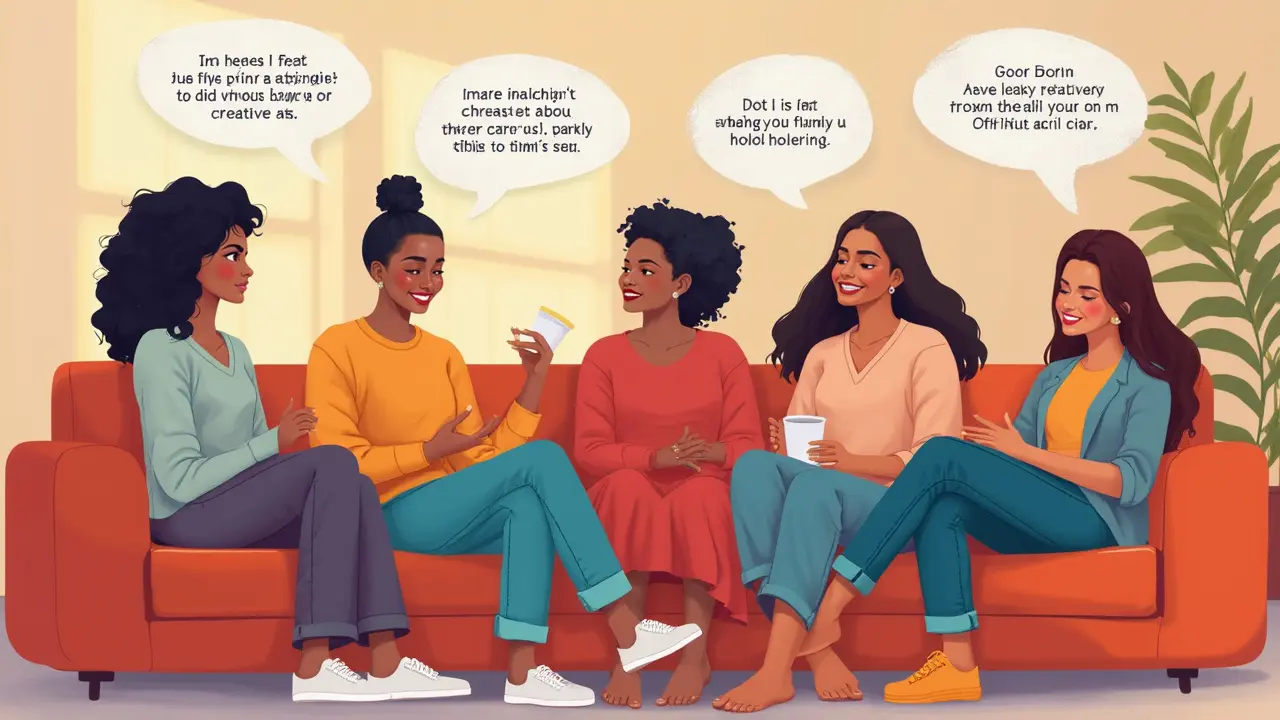So much of the advice floating around out there about queer sex just misses the point. Some stuff leaves you wondering if the person writing it has even talked to another woman, let alone slept with one. If you’re here, you want honest, helpful tips that just work—and you want to avoid the cringe or awkward feeling that’s weirdly common in this conversation.
Here’s something you might not hear enough: queer sex has no single script. There’s nothing you “have” to do, no fixed list of moves, and way more room for play than you’ve probably been told. A lot of people still believe myths, like you don’t need protection, or that certain things “don’t count.” That’s complete nonsense.
If you’re curious about protection because the advice you see online feels either out of touch or straight-up irrelevant, you’re in good company. Dental dams and gloves aren’t just for the movies or hospitals. They’re actually super useful (and with a little creativity, they’re not a mood killer).
And if you’re worried about saying what you like or don’t like, you’re definitely not alone. So many queer women think communication will wreck the moment, but honestly, it makes things a lot hotter.
- Busting the Myths: What Everyone Gets Wrong
- Protection and Safety: Making It Actually Hot
- Communication: Say What You Want (and Hear Her Out)
- No-Limit Pleasure: Exploring Ideas and Toys
- Aftercare and Checking In: The Real Secret Sauce
Busting the Myths: What Everyone Gets Wrong
If you search for info about queer women and sex, you’ll hit walls of misleading or outdated stuff. It’s wild how many myths stick around just because no one calls them out. Time to dump the nonsense and talk real facts.
First up: You absolutely need to care about safe sex if you’re a queer woman. Here’s the truth—STIs don’t care who you’re into. The Centers for Disease Control and Prevention (CDC) reports that women who have sex with women can, and do, transmit things like herpes, HPV, and bacterial vaginosis. Even if there’s no penis involved, sharing sex toys or having direct skin-to-skin contact means you’re not magically immune.
Some folks think protection is only for straight couples. That’s just plain wrong. It’s not about being paranoid—it’s about knowing how to keep you and your partner healthy. Here’s some data to back this up:
| STI | Transmission Possible Between Queer Women? | Common Ways |
|---|---|---|
| HPV | Yes | Skin-to-skin/genital contact, shared toys |
| Herpes (HSV) | Yes | Skin-to-skin, oral, shared toys |
| Chlamydia & Gonorrhea | Rare but possible | Shared toys, vaginal fluids |
| BV/Yeast Infections | Yes | Genital-genital, shared toys |
Another common myth: “Sex between women can’t be ‘real’ sex.” That’s such useless gatekeeping. Sex isn’t just about penetration or what you see in straight porn. For queer women, anything that gets you feeling good, connected, or turned on—that’s sex. That’s it. Don’t let old-school ideas mess with your head or make you feel like you’re “missing” something.
You might also hear that queer women never get pregnant, so there’s nothing to stress about. Honestly, that’s not always true either. Sperm lives for hours—even days—inside a vagina. If you’re hooking up with someone using sperm to get pregnant, or have any encounter where semen is involved (think sex parties or swapping toys that aren’t cleaned), pregnancy can still happen. It’s rare, but it’s something to keep in mind if it’s relevant to your life.
- You don’t have to “fit a type” to have amazing sex. Butch, femme, non-binary, whatever—there’s no right way to do queer sex.
- You don’t need some “special move” to make your experience valid. Nobody hands out awards for who does what. Explore and do what feels right.
- It’s normal to feel nervous talking about these myths. If you have questions, you’re not alone. No shame here.
The bottom line: If someone tries to tell you queer women don’t have to think about safety, or that their sex “doesn’t count,” feel free to roll your eyes. You get to decide what good sex means to you. Real facts give you the freedom to do things your way, not get boxed in by old-school ideas.
Protection and Safety: Making It Actually Hot
Most queer women have probably seen protection gear—like dental dams or gloves—on those random health class slideshows, but almost no one explains how to actually use them in the real world. It’s not about being paranoid. It’s about knowing how to keep things safe and still have a good time. Fact: anyone swapping body fluids, hand-to-genital contact, or sharing toys can pass on STIs. Yep, even if there are no dudes in sight. The CDC says vaginal, anal, and even oral sex between women can lead to things like HPV, chlamydia, herpes, and gonorrhea. Statistically, queer women are less likely than straight folks to use barriers, but STIs don’t discriminate.
If barriers make you roll your eyes, here’s the thing: there are ways to make them more fun, less clinical, and way less distracting. For example, try flavored condoms or dental dams. Cut open an unlubricated condom to make an instant dental dam. Use gloves if you have cuts or chipped nails. Lube isn’t just for straight sex either—it cuts down on friction and makes everything smoother (literally). Not all lubes are toy-friendly, so check what’s safe with your gear.
- Flavored dams and condoms can actually taste like fruit—find a brand you don’t hate.
- Try putting on protection as part of the foreplay—it doesn’t have to be a mood breaker.
- Swap out barriers if you switch from anal to vaginal play. Same goes for toys—always clean or cover them between uses.
- Keep a stash of wipes by the bed for quick cleanup, in case you want to switch things up.
- Lube in a pump bottle means less mess (trust me, squeezing a tiny packet with slippery hands is a nightmare).
| Protection Tool | Best For | Quick Tip |
|---|---|---|
| Dental dam | Oral on vulva/anus | Add flavored lube on top |
| Finger cot/glove | Fingering, especially if nails are long | Go latex-free if sensitive |
| Condom on toy | Sharing toys | Change between partners/holes |
| Lubricant | Everything | Silicone works for water fun; water-based for most toys |
The real trick is to treat protection as just another tool for having good queer women sex tips—not a mood killer. If you act confident about it (or just relaxed), it won’t feel awkward. Plus, setting these safety habits now means you spend less time worrying and more time enjoying. Don’t buy into the myth that safe sex is boring; it’s just sex with fewer worries tossed in. That’s pretty hot, honestly.

Communication: Say What You Want (and Hear Her Out)
Here's the straight talk—communication is the real foreplay. Most of the best experiences happen when both people are actually saying what feels good, what doesn't, and what they're curious about trying. Seriously, even a 2022 YouGov survey found that over 60% of LGBTQ+ folks rate honest talk as the #1 thing making sex better. It's wild how much things heat up when no one's left guessing.
If this sounds intimidating, you’re not weird. Loads of queer women get nervous about opening up, worried that asking for something will make things awkward or kill the vibe. The truth? Just the opposite. Whether you're with someone new or your long-term partner, clear talking is hotter and leaves way less room for misunderstandings.
Some ways to get things rolling without feeling like you’re at a formal job interview:
- Keep it light—try "I'd love it if you..." or "Can we try...?" instead of just yes/no stuff.
- Make it specific. Instead of "go slower," try "Can you use your tongue here a bit longer?"
- Don't forget asking her what she likes, too. Try "What feels best for you right now?" or "Want to show me what you love?"
- Physical cues count, but don’t rely on them. If you’re not sure, just ask.
You might think you’re supposed to “just know,” but mind-reading isn’t real. Even the best partners get it wrong sometimes. Checking in saves a lot of confusion.
Here's a quick look at why clear talk matters for queer women sex tips and satisfaction, based on actual research:
| What Good Communication Does | Actual Impact |
|---|---|
| Boosts comfort | 81% said it made them feel safer and more relaxed* |
| Improves satisfaction | 67% reported better orgasms when they communicated* |
| Reduces awkwardness | Only 16% felt things got "weird" after asking for something new* |
*Numbers from a 2023 LGBTQ+ Relationships Survey (2000 women polled)
Another tip: you don’t have to talk only during sex. Discussing what you want outside the bedroom—over food, on a walk—can take the pressure off. Write it down if that’s easier! There’s no "right way" to do this, just be honest, be curious, and never assume she knows exactly what you need unless you say so.
No-Limit Pleasure: Exploring Ideas and Toys
If someone told you queer sex is limited, ignore them. There’s seriously no ceiling when it comes to pleasure and new things to try. People think sex toys have to be intimidating, but they’re honestly just tools for more ways to have fun—solo or together. And if you’re thinking toys are only for certain types of sex, the data says otherwise. In a 2023 survey by queer women sex tips blog "Autostraddle," 74% of queer women reported using toys with a partner.
Let’s break down some ideas to step up your pleasure game, with or without a full toy drawer:
- Vibrators: These are a classic for a reason. They’re easy to use, can help with everything from quick pleasure to deeper exploration, and work great for both external and internal use. Try different speeds or patterns—everyone has a favorite setting.
- Strap-Ons: Not just for penetration. Some couples like to swap roles, or even double up—literally. There are harnesses and toys in all shapes and sizes, including bendy ones that feel more lifelike or dual-ended toys.
- Finger Sleeves and Gloves: These aren’t just about safety. A textured glove or finger cover can help you try different sensations or keep things cleaner. Some people use them for anal play, too.
- Plugs and Beads: Anal toys aren’t just for straight people. Queer women use plugs, beads, and even small vibrators as part of their routine. Start small, go slow, and always use a quality lube.
- Remote-Controlled Toys: These let you or your partner control the vibe from across the room (or the city, with some models). It’s a sneaky way to build up fun throughout the day.
- Household Items: Not everything has to come from a sex shop. Clean electric toothbrushes, silk scarves, and even ice cubes can spice things up. Just avoid anything sharp or made from materials that could break or cause irritation.
If you want some legit numbers, here’s a quick look at what queer women said they actually use during sex:
| Toy/Idea | % Reporting Use (2023) |
|---|---|
| Vibrators | 78% |
| Strap-ons | 61% |
| Finger sleeves/gloves | 35% |
| Anal toys (plugs/beads) | 28% |
| Household items | 18% |
Mix things up by combining toys or ideas. For example, try a blindfold and then go for a surprise texture, or swap toys halfway through. Lube will almost always make things better and safer—water-based is the MVP because it works with just about every toy and body.
And don’t forget, the best part is finding out what you and your partner are curious about. If you’re nervous, start with something simple and build up as you go. Trying something new shouldn’t feel like a test—it should just be a fun experiment you get to share together.

Aftercare and Checking In: The Real Secret Sauce
People usually talk up foreplay and skip what comes after, but aftercare is what really sets apart a good experience from a meh one—especially among queer women. Aftercare just means taking care of each other once sex is done. It can be anything from cuddling, chatting, grabbing water, or sending a text if you’re not together in person. Nobody wants to feel left hanging or like the fun just ended and you’re both supposed to pretend it never happened.
Loads of queer couples rate aftercare as just as important as the main event. In a 2023 survey on LGBTQ intimacy, 68% of queer women said emotional comfort right after sex makes for a closer connection. That’s not fluff—it’s linking real feelings to solid sex.
| Aftercare Action | Why It Matters |
|---|---|
| Check-in conversation | Makes both people feel seen and heard |
| Physical touch (like cuddling or holding hands) | Boosts oxytocin, helps you both relax |
| Water or snacks | Basic care—shows you’re thinking about each other’s needs |
| Honest feedback ("Did you like when…?") | Lets you both grow together and learn for next time |
It’s easy to feel awkward asking “Was that okay for you?” but regular check-ins take the guesswork out of things. Getting clear feedback (good or bad) makes future hookups way better. Try these tips once things wind down:
- Ask something simple but real: “How are you feeling?” or “Anything you want different next time?”
- Keep snacks or water on hand. Hydration isn’t sexy, but it matters.
- Don’t bounce straight to scrolling on your phone—share a quiet moment instead.
- If either of you feels weird or emotional, say so. There’s no shame in feeling stuff after sex.
Every person’s version of aftercare is different, so talk it out before or after. Whether you want to be left alone or cuddled for an hour, that’s valid. The biggest thing: don’t skip aftercare. It’s the unsung hero of queer women sex tips—and way more satisfying than just rolling over and calling it a day.




